#Hohokam anasazi
Explore tagged Tumblr posts
Photo
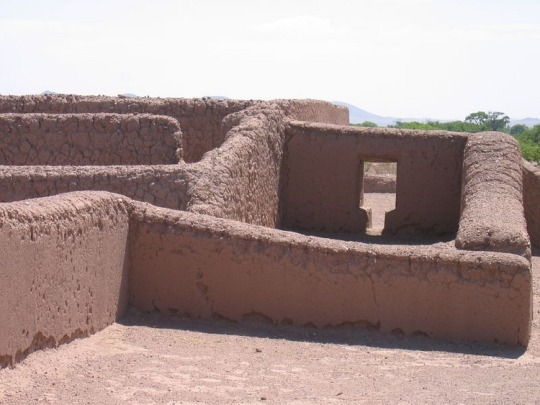
Casas Grandes
Casas Grandes or Paquimé was a major pre-Columbian city that flourished due to its extensive trading networks between c. 1150/1200-1450 CE in the northwest of present-day Chihuahua, Mexico. Casas Grandes is one of the largest and most important archaeological sites in the Oasisamerica region, and the city played a key role in the transmission of knowledge and goods between the cultures of the Pre-Columbian desert southwest and those of Mesoamerica. The construction of Casas Grandes is widely attributed to people who demonstrated the marked characteristics of the Mogollon culture, which existed from c. 200-1450 CE in what is now southern New Mexico and Arizona as well as northern Mexico, but a lively scholarly debate continues as to the exact ethnicities and origins of the peoples who lived in and founded Casas Grandes. Although only 20% of the site has been excavated and surveyed, UNESCO designated Casas Grandes as a UNESCO World Heritage Site in 1998 CE.
Geography & Origins
Situated at the foothills of the Sierra Madre Occidental Mountains and the headstream of the Casas Grandes River (Spanish: Río San Miguel), Casas Grandes or Paquimé is located in what is now the Mexican state of Chihuahua. Blessed in terms of hydrology, Casas Grandes is positioned between many rivers: The Río Bavispe and Río Yaui lie to the west of the Sierra Madre, and the Río Bravos and Río Carmen lie to the east. The city is 56 km (35 miles) south of the city of Janos and 240 km (150 miles) northwest of the city of Chihuahua. Casas Grandes' archaeological zone covers 146 hectares (361 acres), and the city covered over 750,000 m2 (185 acres) at its height. (This is 27 times larger than Chaco Canyon's Pueblo Bonito.) Casas Grandes' periphery included an estimated 10,000 additional inhabitants. Around 350 settlements of varying size existed in close proximity to Casas Grandes, but scholars and archaeologists believe that Casas Grandes' zone of political influence only extended some 30 kilometers (19 miles) from the city's center.
The region had been inhabited by indigenous peoples for thousands of years before the community at Casas Grandes began to coalesce into a sizable, organized community in the latter half of the 12th century CE. The early inhabitants were sedentary agriculturalists who built pithouses around open plazas, hunting wild game for food. Maize was the staple crop, but agave, mesquite beans, piñon, squash, and walnuts were also cultivated.
Many scholars and archaeologists characterize Casas Grandes as the largest and most complex prehistoric site in the desert southwest with high degree of sociopolitical complexity. However, the exact genesis of Casas Grandes around c. 1200 CE remains a matter of much speculation and fierce debate. Casas Grandes emerges as a dynamic polity and cultural center in a period immediately following a massive decline and dispersion in the populations of the Anasazi, Mogollon, and Hohokam between 1150-1300 CE. While some scholars explain Casas Grandes' rapid rise to prominence via a series of migrations southwards by inhabitants belonging to those cultures, others see a more localized origin for Casas Grandes' spectacular rise.
Continue reading...
25 notes
·
View notes
Text
A crash course in some vocabulary
Archaeology, like all sciences, has a lot of specialized jargon we use to talk about pottery. To make sure everyone’s on the same page, here’s a list of some common terms I’ll be using, what they mean, and how to pronounce them.
~ 🏺🏺🏺 ~
Ware: A broader term for a technological/cultural tradition in pottery. Typically, construction method, color, clay type, temper type, and paint type are what defines a “ware.” So Chuska Gray Ware is unslipped, usually unpainted gray clay with crushed black basalt temper. Roosevelt Red Ware is red-slipped clay with sand temper and carbon-based paint. Hohokam Buff Ware is unslipped or cream-slipped buff-colored clay with coarse sand temper, created using a paddle-and-anvil forming method and painted with red paint.
Type: Within a ware, a type is a more narrowly specific decorative style. Roosevelt Red Ware has multiple types within it, such as Salado Red (unpainted red-slipped), Pinto Black-on-red (black paint on the red in a specific radially symmetric interlocked hatched-and-bold pattern), Pinto Polychrome (same decorative style but on a white-slipped interior field), Gila Polychrome (red exterior, white-slipped interior, a usually-broken black band around the rim, black painted designs in a two- or -four-fold symmetry), Tonto Polychrome (bolder and less symmetric black-and-white designs on a red field), Cliff Polychrome, Dinwiddie Polychrome, Nine Mile Polychrome… different stylistic variations on the Roosevelt Red Ware technological/visual core. You can read more about categorizations here.
A note on naming conventions: Pottery in this archaeological tradition tends to have a two-part name: a location where it was first defined and described, and a colorway. Wares tend to be “[Broad location or broad cultural group] [Color] Ware”; types tend to be “[Specific site] [paint color]-on-[clay color].” So within Tusayan White Ware is Flagstaff Black-on-white.
———
Gila: A river in southern Arizona and a bit of New Mexico, and a lizard and a polychrome type named after it. Pronounced hee-la.
Hohokam: An archaeological term for a Native American cultural group that lived in southern Arizona and northern Sonora, defined by traits like red-on-buff pottery, massive canal systems for field irrigation, and platform mounds. It comes from the O'odham-language word huhugham, “ancestors.” They are the ancestors of the modern Tohono O’odham and Akimel O’odham people (it’s a little bit more complicated than that but that’s basically the case.)
Mogollon: An archaeological term for a Native American cultural group from central New Mexico, eastern Arizona, and northern Chihuahua. Most iconic trait is the elaborate range of corrugated and smudged pottery. Named after the Mogollon Rim, the geological formation that marks the edge of the Colorado Plateau and a drastic change in geology and climate in the northern Southwest and the southern Southwest. Along with the Ancestral Pueblo, the Mogollon culture are ancestors of modern southern Rio Grande and Zuni pueblos. Pronounced moh-guh-yon.
Olla: A water jar with a wide body and narrow neck. Pronounced oy-ya.
Polychrome: Pottery that is three or more colors (poly+chrome), most often meaning red, white, and black.
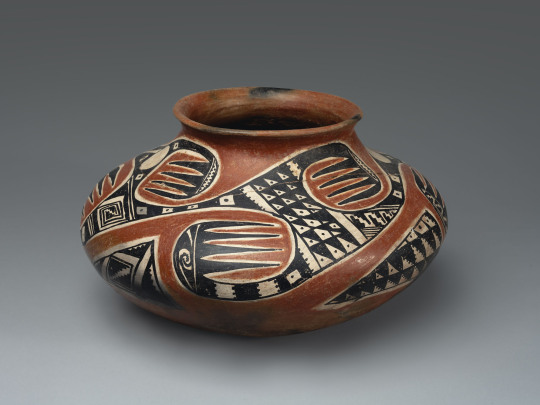
A Tonto Polychrome olla. Southeastern Arizona, 1350-1450.
Pueblo: A collective term for Native people of the Southwest US (particularly in the Rio Grande river watershed, but also Hopi and Zuni) who share cultural traits and history—most immediately notably, a tradition of living in square adobe houses in large villages, which are also each called pueblos. Ancestral Pueblo is the term for the archaeologically-defined cultural group that share these similar traits and are, generally, from the northern half of New Mexico and Arizona, and a southern strip of Colorado and Utah. The Ancestral Puebloans were formerly called “Anasazi” but that has fallen out of favor due to pushback from modern Pueblos. Also, each modern Pueblo prefers to be called a Pueblo rather than a tribe in most cases—so you say the Pueblo of Acoma, the Pueblo of Ohkay Owingeh, Picuris Pueblo, Taos Pueblo, the Pueblo of Zuni, etc.
Temper: Non-clay bits that are added to natural clays to make them easier to work with. When you buy clay from a store now, it’s already mixed and processed and ready to use. When you find clay out in nature, it’s almost never so easy. Typically, you have to mine/harvest clay from riverbanks or cliffsides, and it’s hard and dried; then you have to grind the hard clay up into fine particles, and mix them with water. But natural clays are often puddly and don’t always hold together well, so you add temper, something hard and grainy to make your wet clay stick together more easily and make it good to work with! Temper can be sand, ground-up rock, ground-up shell, or even ground-up bits of other broken pottery. What different people used as temper is one defining feature of a pottery ware and pottery tradition.
Sherd: A broken bit of pottery. NOT shard. When it’s pottery, it’s “sherd.”
Slip: Very runny wet clay. It’s used to help attach clay pieces together, but more pertinently here, plain-colored pots are covered with an even layer of bolder-colored clay slip to get the desired color pot.
Smudging: A decorative style that potters made during the firing stage. They would have open pit-fires for firing their pottery, and cover the desired part of the pot with a layer of charcoal or ash. This creates a carbonized, reducing environment—that is, a lot of carbon, and little oxygen. This creates a smooth, inky black finish on the completed pot.
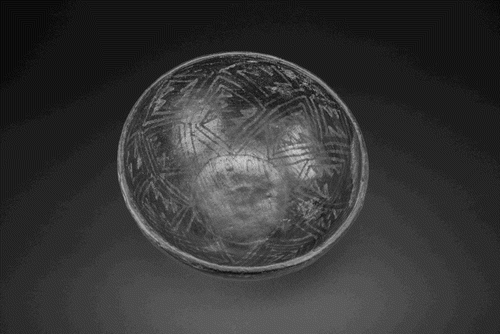
A Starkweather Smudged bowl. Mogollon, western New Mexico, AD 900-1200.
Vessel: Another word for pot, basically. Means a ceramic container of some sort. Bowls, jars, ladles, pitchers, mugs, etc are all vessels; effigies and statuettes are not.
58 notes
·
View notes
Text
Splatoon: The Vestigial Species - Design Ideas (North America)
If you have not viewed the main post first, please do so. Otherwise, here is a list of archaeological cultures which you are free to choose from to use as an inspiration when designing your human society!
Arctic
Saqqaq Culture
Groswater Culture
Independence I Culture
Independence II Culture
Dorset Culture
Old Bering Sea Culture
Birnirk Culture
Punuk Culture
Thule Culture (Proto-Inuit)
Pacific Northwest
Old Cordilleran Culture
Tlingit
Haida
Tsimshian
Kwakiutl
Coast Salish
Nuxalk
Nuu-chah-nulth
Chinook
Area of the United States
Clovis Culture
Folsom Tradition
Old Copper Complex
Poverty Point Culture
Adena Culture
Fort Ancient Culture
Hopewell Culture
Mississippian Culture
Anasazi
Archaic-Early Basketmaker Culture
Early Basketmaker II Era
Late Basketmaker II Era
Basketmaker III Era
Pueblo I Period
Pueblo II Period
Pueblo III Period
Oasisamerica
Mogollon Culture
Hohokam Culture
Patayan Culture
#splatoon#splatoon 2#splatoon 3#splatoon 4#splatoon headcanon#splatoon fanart#splatoon fandom#splatoon art#fan concept#art collab#art contest#collaborative projects
7 notes
·
View notes
Text

Anasazi Indians: The Ancestral Puebloans were an ancient Native American culture centered in present-day Four corners area of the United States, comprising Southern Utah, Northeastern Arizona, Northern New Mexico, and South Western Colorado.
They lived in a range of structures, including pit houses, pueblos, and cliff dwellings designed so that they could lift entry ladders during enemy attacks.
The people and their archaeological culture were historically called Anasazi from Navajo term Anaasazi, meaning "Ancient Ones"
Between 300B.C. and 100A.D., there were four distinct Indian cultures settled in SouthWest, Anasazi, Mogollon, Hohokam, and Sinagua. The fifth culture, the Fremont Indians settled primarily in Utah in 400A.D.
2 notes
·
View notes
Text
“I question colonial-era narratives of Aztec cannibalism, because they got enough protein to not need cannibalism. Also Nahua sources also describe cannibalism with disgust.”
Okay well that would mean something if the Aztecs’ patron god, Huitzillopochtli, were not also known as Nahualli, “the skinwalker” (in the real sense, “person who can take animal shape and use death-curses due to deliberately breaking taboos”—actually a Uto-Aztecan concept, specifically Hopi, not an Athabascan one native to the Navajo, since the Apache have no such belief). The natives who forced Cortes to fight Tenochtitlan were all Nahua too: they regarded the Tenochca as evil heretics.
Also, the most extensive study of precolumbian cannibalism in the US Southwest, most of which is by cultures like the Hohokam and Anasazi (or Hisatsinom) that probably spoke Uto-Aztecan languages, Man Corn: Cannibalism and Violence in the Prehistoric Southwest, lists the most likely explanations as “social control, social pathology, and some manner of ritual sacrifice”. Notice “nutrition” isn’t on the list? And hmm, was the Aztec Empire known for “social control … and some manner of ritual sacrifice” at all? Anybody?
#salty amateur historian#salty amateur anthropologist#things that ain't so#i guess this is discourse
7 notes
·
View notes
Photo

Interview: Civilisations Précolombiennes du Sud-Ouest des États-Unis
Les civilisations précolombiennes du sud-ouest des États-Unis et du nord du Mexique comprennent les Hohokam qui occupaient l'État américain de l'Arizona, les Anasazi ou Pueblo ancestraux qui résidaient dans la région des Four Corners, et les Mogollon qui habitaient le sud du Nouveau-Mexique et les parties septentrionales de Chihuahua au Mexique. Ces cultures ont prospéré pendant des centaines d'années avant l'arrivée des conquistadores espagnols au XVIe siècle. Chacune d'entre elles a laissé une empreinte culturelle indélébile dans la région, qui perdure aujourd'hui. Néanmoins, leurs impressionnantes réalisations dans les domaines de l'art, de l'architecture et de l'ingénierie restent trop souvent sous-estimées et peu étudiées, même aux États-Unis.
Lire la suite...
#Histoire#CultureSalado#CulteDeLaKachina#Hovenweep#ChacoCanyon#CasasGrandes#CanyonDeChelly#Mésoamérique
0 notes
Text




History and virtues of the turquoise according to the Native Americans.
Venetian merchants were the first to introduce and sell turquoise in Europe in the 17th century. At that time the stone took its name from the French "turquois" meaning "stone of Turkey". The Europeans named it this way thinking that turquoise were originally from Turkey. However, turquoise is found on two continents, Asia and America. Native American turquoise was discovered much earlier, in the United States. From the year 200 B.C. by the Hohokam and Anasazi tribes, whose territories today correspond to Arizona and New Mexico, used them.
How turquoises have been discovered?
A people of Native American farmers, established in New Mexico on the banks of the Rio Grande, were the very first to discover Native American turquoise stone. A few years later, in the year 1500, the Spaniards arrived on Native American lands. They were followed by missionaries and Anglo-Americans. All of them mixed with the Amerindians and discovered the beauty of Amerindian turquoise. They immediately saw the potential of this stone, which quickly became an object of great value, especially in trade and commerce. Long before the famous California gold rush, there was a very different rush: the turquoise trail. This is the mythical route that miners used to take in search of this blue stone, stretching from Albuquerque to Santa Fe.
How turquoises are extracted?
Turquoise is one of the very first stones that man extracted from the ground. Turquoise mines were present in 6 states in the southwestern United States: Nevada, California, Utah, Colorado, Arizona and New Mexico. Many mines are now closed because they no longer have turquoise to extract. Most of the stone deposits were then only 30 meters below the surface. Early miners used pickaxes and did not have the technology to dig deeper. As a result, they found lower quality stone because it was too close to the surface. The larger and better quality Native American turquoise stones are better anchored in the ground.
They require much more modern means of extraction since they are located in a hard rock, granite. While formers miners used wooden tools, today's miners are modernly equipped: Steel shovels, jackhammers and excavators make it possible to dig deeper and deeper into the ground. The desire to find Native American turquoise stones drives them to dig deeper and deeper into the ground. It is also possible to find turquoise deposits on the southern slopes of the mountains in winter. During this period, the southern slopes receive much more sunshine. The snow and sun mix and the water rushes down to form a spring below. Knowledgeable stone seekers know that by following this flow they have a good chance of finding a deposit of Native American turquoise stones.
What are the turquoise's virtues according to the Native Americans?
Turquoise, also known as the "stone of life" has a special significance in Native American culture. Many tribes believe that this stone is "alive" because it has the ability to change color according to its environment. In the Native American beliefs there is the fact that the Earth lives and that everything that emanates from it is therefore very precious. According to them, the Native American turquoise has incredible powers and would be a piece of the sky sent to Earth by the gods. It was used in most ceremonies and prayers as well as in medicine. Some people also believed that it was possible to influence the weather with this stone.
The Navajo people, whose territory now stretches from New Mexico to Arizona, used turquoise in their ceremonies. They would dip the stone into a river to bring rain. For the Apaches, it was used for protection during wars, battles or even hunting. According to them, the stone combined the powers of the sky and the sea. It brought courage and luck to warriors, hunters and all the tribe members.
By Harpo
2 notes
·
View notes
Text
The Fascinating World of Sleeping Beauty Turquoise
Unveiling the Rich History and Mystique of Sleeping Beauty Turquoise
Introduction: A Gem of Distinction
Sleeping Beauty Turquoise is a gemstone that has transcended its physical beauty to become synonymous with the very essence of turquoise. Its allure lies in its striking sky-blue color, free from heavy matrix, and has captivated people worldwide, often rivaling the coveted robin's egg clear Blue Persian Turquoise among collectors. This exquisite gem typically takes the form of nuggets with a soft white matrix, occasionally bearing traces of quartz or pyrite. Over the years, as preferences shifted towards stones with matrix, techniques like artificially darkening the matrix with shoe polish emerged to create higher contrast.
Discovering Sleeping Beauty Turquoise: A Humble Origin
Sleeping Beauty Turquoise from Arizona traces its roots back to the Native Americans during the Anasazi era, where it was initially mined with rudimentary hand tools and collected bit by bit. During this period, this gem found its way to Pueblo Bonito, serving as a vital trade center for Anasazi Turquoise for tribes spanning North America, Central America, and even South America. In later years, the Sleeping Beauty Mine underwent development by Anglo settlers in their pursuit of copper and other metal ores. The mining operations were managed under contract by Monty Nichols, a miner often credited with metaphorically "tearing down a mountain" to unearth the illustrious Sleeping Beauty Turquoise – a testament to the tremendous effort invested in acquiring this iconic gem.
A Tale of Accidental Discovery: Turquoise Through the Ages
Imagine yourself transported back to the era of King Tutankhamun in Egypt, circa 1330 BC. Thousands of laborers toiled in the mines of the Sinai Peninsula, unearthing turquoise to adorn the Pharaohs. When King Tut's treasures were unveiled, they included exquisite pieces of brilliant blue turquoise. Although the mines of Sinai had long been forgotten and depleted, they were rediscovered in the mid-1800s, sparking renewed interest in turquoise mining.
Meanwhile, on the other side of the globe, in the realm of Native Americans, turquoise was being mined for the Aztec Kings. It served various purposes, from crafting pendants and beads to facilitating trade. Evidence abounds that the prehistoric peoples of the Anasazi and Hohokam tribes mined turquoise in what we now call the Southwest, trading it across hundreds of miles from its source.
The renowned "Persian Turquoise," with its robin's egg blue hue, was cherished by people in Persia (now Iran), Afghanistan, Siberia, and Turkistan (now Turkey). This precious gem was discovered in ancient graves dating from the first to the third century AD. It embarked on a journey to Europe in the late 1600s, and owing to its passage through the French-named Turquie, some believe that it derived its name from the Frenchmen who believed Turquie to be its place of origin.
China, too, shared a profound love for turquoise dating back to the thirteenth century AD, employing it predominantly for carving and decorative items. In Tibet, turquoise was utilized as currency and amulets. Although China had a few turquoise mines, their primary sources were Persia, Tibet, and Turkey.
Benefits and Significance of Sleeping Beauty Turquoise
Sleeping Beauty Turquoise is celebrated for its exceptional qualities, with stones ranging from chalky-blue "robin's egg" blue to sky-blue to deep blue. The rarer the deep blue hue, the more prized the stones become. However, in the realm of Sleeping Beauty Turquoise, achieving the perfect sky-blue color is paramount for jewelers and gemologists. They seek gems devoid of matrix, replicating the vintage Persian Turquoise appearance, as these are considered the most precious Sleeping Beauty Turquoise stones.
Beyond its aesthetic appeal, Sleeping Beauty Turquoise holds metaphysical and healing significance. It is revered as a purification stone, capable of dispelling negative energy and shielding against environmental pollutants. Turquoise is known to harmonize and align all chakras, promoting emotional stability, inner calm, and aiding in creative problem-solving. It symbolizes friendship and stirs the flames of romantic love.
In addition to its metaphysical properties, Turquoise is believed to facilitate the absorption of nutrients, bolster the immune system, promote tissue regeneration, and detoxify the body. It offers relief from cramps and pain, making it a cherished gem with both aesthetic and therapeutic value.
Conclusion: The Enduring Allure of Sleeping Beauty Turquoise
Sleeping Beauty Turquoise is not merely a gemstone; it's a living testament to history, culture, and the enduring fascination humans have had with this mesmerizing blue gem. Its vivid sky-blue hue and metaphysical properties continue to captivate jewelry enthusiasts, artists, and collectors alike, rendering it a cherished and timeless icon in the world of gemstones. Whether adorned in jewelry or admired for its symbolic significance, Sleeping Beauty Turquoise remains an eternal source of inspiration and beauty.
#sleeping beauty turquoise#about sleeping beauty turquoise#sleeping beauty turquoise meaning#sleeping beauty turquoise stone#sleeping beauty turquoise gemstone#history about sleeping beauty turquoise
0 notes
Text
Hohokam anasazi

The introduction of corn allowed the Anasazi to settle in one area. The Anasazi did not make pottery during this period, but they did raise Meso-American corn and squash with dry farming and some flood irrigation. The Ancestral Puebloans made and used baskets as containers some were woven tight enough to hold water. The early Anasazi lived in shallow depressions in the ground covered by a canopy of brush and mud called pithouses. This large mountainous region encompasses the Four Corners area, as well as, other parts of Utah, Arizona, Colorado, and New Mexico.Īrcheologists recognize two major periods in the archeological record of the Anasazi, or Ancestral Puebloans: the Basketmaker and Pueblo. D., the Anasazi settled on a high plateau in an area much different than the rest of the Southwest. Spanish Conquistadors named them Pima and Papago. Early Spanish explorers found the descendants of the Hohokam living in small villages. During the twelve hundreds, the Hohokam abandoned their towns and returned to a hunter and gather existence. The Hohokam came to believe their leaders and priests had lost favor with the plant and the rain spirits. Snaketown was located on the Gila River above where the Gila empties into the Salt River.īetween 11, a prolonged drought led to crop failure, starvation, and violent feuds. The largest Hohokam pueblo, Snaketown, had about a thousand residents living in adobe row houses, some of them two and three stories tall. Besides Mesoamerica, the Hohokam carried on a wide trade network between the Anasazi and the Mogollon. Located between Phoenix and Tucson, the Casa Grande ruins were built by the Hohokam. Hohokam settlements were spread from the Tucson Basin, into the Phoenix area, and as far north as present-day Flagstaff. Some of these canals were up to fifty feet wide and dug with massive organized labor using stone tools (Walker). 300 and 500, the Hohokam constructed over a thousand miles of irrigation canals. Although the Hohokam relied a great deal on hunting and gathering, they were good farmers and water engineers. They built rectangular pithouses and lived in small villages. The Hohokam Indians settled in the Gila and Salt River valleys of southern Arizona around 300 B.C. Despite this, the Mogollon Indians had abandoned the mountains by 1200 A.D. Deer, antelope, and other wild game were plentiful in the Mogollon Mountains. had good soil and abundant moisture for growing maize. The mountainous region where the Mogollon lived between 9 A.D. The use of agricultural plants necessitated moving from pithouses to more permanent villages. The Mogollon Indians were initially hunter-gatherers, but as their civilization advanced, they acquired corn, squash, beans, tobacco, and cotton from Mesoamerica. The Mogollon culture eventually expanded to the southern rim of the Colorado Plateau. The Mogollon (mo-ge-yōn) people occupied mountainous areas of Arizona and New Mexico in approximately 200 B.C. In trade with Mesoamerica, they exchanged turquoise for parrot feathers, copper bells, maize (corn), beans, squash, and cotton (Taylor). To varying degrees, the Anasazi, Hohokam, and Mogollon were influenced by the Indians of central Mexico. Except for dogs and turkeys, these Prehistoric tribes did not have domesticated animals, a system of writing, or the wheel. The Southwest Indians had broad similarities in their cultures, but they had distinct languages and political unity. The names, Mogollon, Hohokam, Anasazi, and later Fremont, were given by archeologists to these Prehistoric Indians. This article on the "Ancient Ones" is based on archeological studies, and is not intended to reflect on the religious beliefs of anyone. None of the religious origin beliefs stand up under the scrutiny of scientific and archeological evidence, but this does not mean the religious beliefs are wrong. The Southwest Pueblo Indians of today are direct decedents of the Prehistoric Indian Cultures that raised corn, irrigated fields, and built massive stone structures in Chaco Canyon and Mesa Verde hundreds of years before the first recorded Europeans even saw North America.Īmerican Indians have their own origin beliefs, just as do Christians, Jews, Moslems, Buddhists, and other religious groups. Corn, beans, and squash become so important in most Indian Cultures that they were known as.The Three Sisters. During the late Archaic Period, corn and then beans and squash provided the means for a settled village lifestyle. and one hundred A.D., the Southwest Indians turned toward agriculture to supplement their food source. Archaic Indians moved with changing seasons and environments, but Anasazi, Mogollon, and Hohokam Indians did not range over the vast distances covered by the big game hunters of the late Pleistocene period or the Archaic Indians.

0 notes
Text
Round 1, Match 1: Northern Polychromes
I call these the "Northern Polychromes" because they are only (in Fourmile's case) or predominantly (in Salado types' case) found in Arizona and New Mexico.
Salado Polychrome
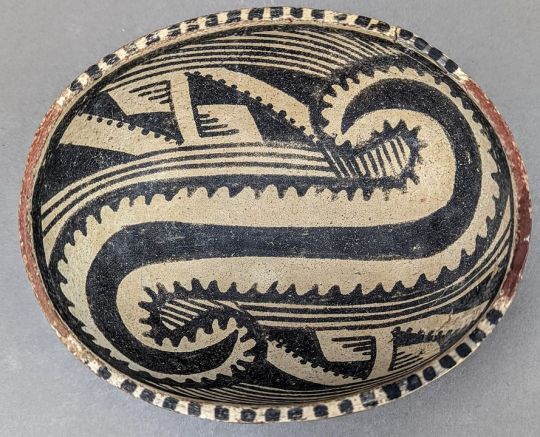
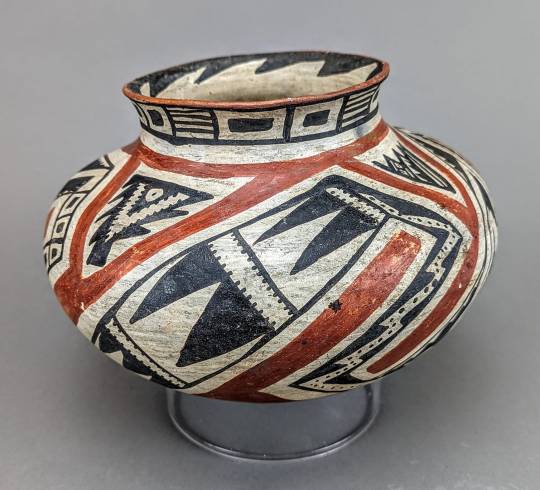
Left, Gila Polychrome oval bowl (AD 1300-1450); Right, Tonto Polychrome olla (AD 1340-1450). Arizona and New Mexico.
vs.
Fourmile Polychrome
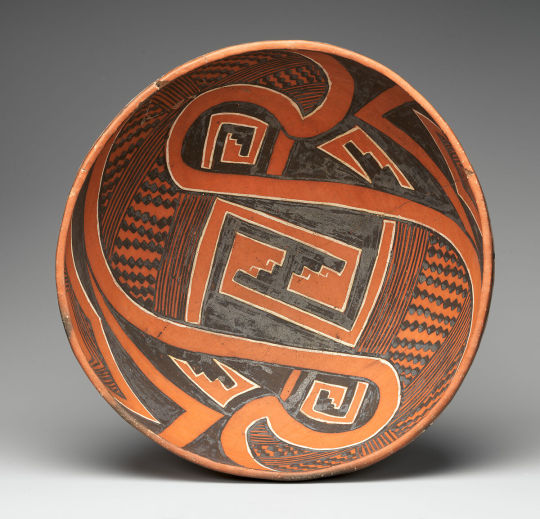
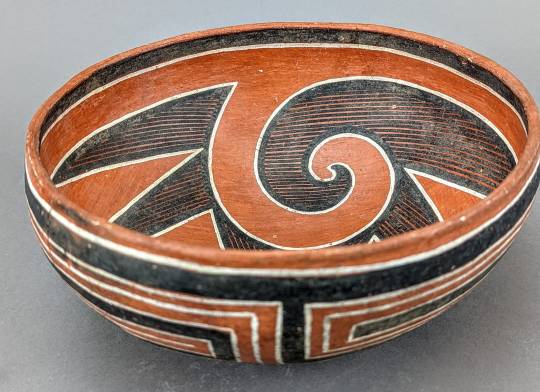
Fourmile Polychrome bowls, AD 1325-1400. Arizona.
More information about each type below the cut:
Salado Polychrome

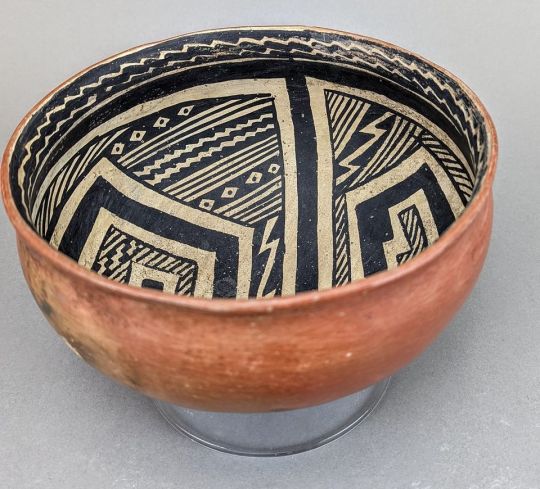
Cliff Polychrome bowl, southeastern Arizona, AD 1350-1450.
Am I biased because this is what I'm writing my dissertation about so I've been thinking about Salado polys nonstop for about 3 years straight? MAYBE. But that's because they're interesting!
Salado polychrome is a collective name for various black, white, and red types of Roosevelt Red Ware. Pinto, Gila, and Tonto polychrome are the three main types, but there are a lot of described type variants.
Around AD 1275, there was a huge drought that lasted 20 years and impacted the whole Southwest. People moved out of the northern Southwest (Mesa Verde, the Four Corners area, southern Utah, northern Arizona) en masse. If you've ever heard of the "mystery" of the "disappearance" of the Anasazi - it's not a mystery, and they didn't disappear. There was a drought, crop failure, social/political instability, and they moved south to where there were population centers and perennial rivers. Some of these immigrants integrated into pre-existing towns; others formed their own enclave settlements.
And right around this time, a new style of pottery became popular in central/southern Arizona and western New Mexico. Like, really popular. Rapidly widespread, all but replacing the previous black-on-white and red-on-buff painted pottery. Gila polychrome (the most common type of Salado polychrome) is notable for being the most widespread decorated ware in the archaeological Southwest. Why?
Archaeologists debated this for decades upon decades. Were the Salado an immigrant group who brought this ware from the Tonto Basin, from the Sinagua, from the Colorado Plateau, from Mexico? Was it a Hohokam development? Was it Mesoamerican influence? You can read the debates back and forth in the 60s-80s and FEEL the palpable frustration!
Modern scholars basically agree that there's no "Salado" culture, that rather Ancestral Pueblo immigrants from the Kayenta and Tusayan regions of northeastern Arizona developed it after they moved to the south. These Salado polychrome pots weren't centrally made and traded widely, they were predominantly made locally to where they were found. But does it represent a retention/renewal of a Kayenta immigrant diaspora identity, or an integrative ideology that brought together immigrants and locals? And where do the Mesoamerican motifs come from?
I'm arguing more from a Kayenta immigrant diaspora identity marker cohesion-after-migration perspective, but it's a super interesting time of upheaval, reorganization, and social dynamism in the Southwest that really set the stage for the modern Pueblos and tribal groups we know today.
Salado polychromes themselves are defined by a red-slipped exterior, a white field, and black designs on white. The black does not touch the red. The exteriors of bowls are usually left plain red, with all the elaborate decoration on the inside. Sometimes there's so much white you can barely see the red. Two- and four-fold rotational symmetry is common; twinned elements are common, but each twin is usually slightly different from the other, not perfect mirrors. Abstracted representations of feathers and feathered serpents are really common too (the Mesoamerican connection). The black paint is organic, relying on a pigment called beeweed - which may have been sourced from back up in the north, a long way to go but clearly important to the people making these pots!
Fourmile Polychrome
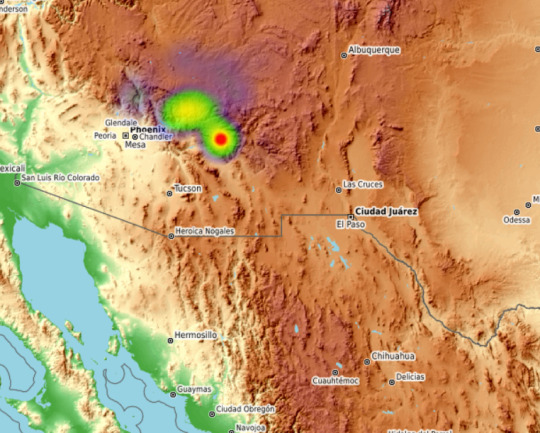

Fourmile Polychrome bowl, AD 1325-1400, central Arizona.
Fourmile Polychrome is a type within White Mountain Red Ware. It's basically contemporaneous with Salado Polychrome, but was made in a different, more northern distribution, by Ancestral Pueblo people who didn't move so far south and congregated around Zuni and east-central Arizona.
Dynamic and bold and more likely to be asymmetrical, Fourmile polychrome is defined by designs in black glaze paint (manganese-based mineral paint with lead in the mix, to make it glossy when it fires and melts) outlined in white.
Both of these types were made by the coil-and-scrape method common to Ancestral (and modern) Pueblo potters (though a small percentage of Salado Polychromes were made by paddle-and-anvil, an argument for the type as an integrative practice...)
24 notes
·
View notes
Text
New episode of the American Southwest Podcast just dropped! It’s got a neat title I’m proud of but even better content! This episode is the 7th in the series about the original Native American inhabitants of the region and specifically about the migration of the Anasazi from the Four Corners region after the Anasazi Civil War down the Chaco Meridian to Northern Mexico and beyond. It discusses their interactions with the local Sinagua, Mogollon, Salado, Hohokam, and Paquime peoples they come into contact with and the destruction of burned pueblos, corn, and humans that they leave in their wake. It also discusses the possible origins of the Anasazi and the possible final iterations of that mysterious group of people after the Spanish arrive.
Listen on Apple Podcasts or Spotify or YouTube (soon).
#history#archaeology#anthropology#native americans#anasazi#ancestral puebloan#four corners#colorado plateau#arizona#Mexico#New Mexico#my podcast#the American Southwest
10 notes
·
View notes
Text
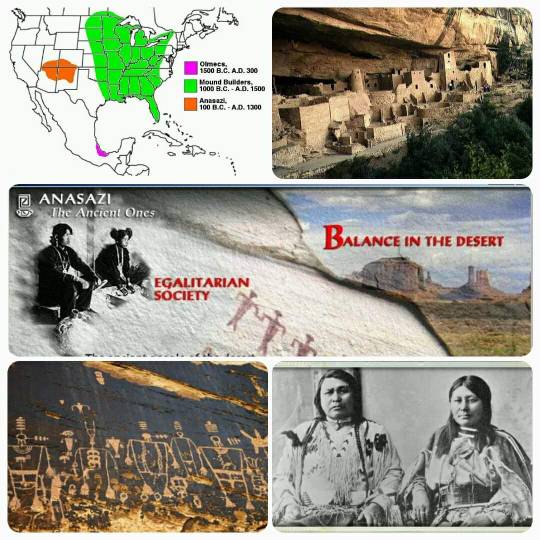
Anasazi Indians: The Ancestral Puebloans were an ancient Native American culture centered in present-day Four corners area of the United States, comprising Southern Utah, Northeastern Arizona, Northern New Mexico, and South Western Colorado.
They lived in a range of structures, including pit houses, pueblos, and cliff dwellings designed so that they could lift entry ladders during enemy attacks.
The people and their archaeological culture were historically called Anasazi from Navajo term Anaasazi, meaning "Ancient Ones"
Between 300B.C. and 100A.D., there were four distinct Indian cultures settled in SouthWest, Anasazi, Mogollon, Hohokam, and Sinagua. The fifth culture, the Fremont Indians settled primarily in Utah in 400A.D.
6 notes
·
View notes
Photo

The Jornada Mogollon occupied much of southern New Mexico and far west Texas for thousands of years. With the Anasazi and the Hohokam, the Mogollon are one of three native prehistoric cultures and is the largest, spanning 400 miles east-west and 500 miles north-south. Various Mogollon branches have been defined to describe the cultural variation across such an immense area including the Jornada Mogollon, the branch farthest to the east and the group attributed to the Three Rivers Petroglyph site, near Carizozo. The Mimbres Mogollon are attributed to the Gila Cliff Dwellings. Read more - https://www.nmmercantile.com/blogs/new-mexico-images-and-stories #newmexico,#newmexicotrue,#newmexicohistory,#newmexicotravel,#newmexicolove,#nmoutside,#nmoutdoors,#santafe,#albuquerque,#lascruces (at New Mexico) https://www.instagram.com/p/CPWB_ntr7Zv/?utm_medium=tumblr
#newmexico#newmexicotrue#newmexicohistory#newmexicotravel#newmexicolove#nmoutside#nmoutdoors#santafe#albuquerque#lascruces
41 notes
·
View notes
Text
sedona arizona history
Scenic Sedona Arizona History
Sedona is located in the Upper Sonoran Desert of northern Arizona at an elevation of 4500 feet. Uptown Sedona (the part in Coconino County) and West Sedona (the Yavapai County portion) form the City of Sedona. Originally founded in 1902, the town was incorporated into a city in January 1988
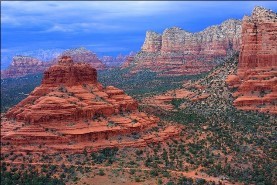
Southwestern America's stunning desert country, with its soaring red sandstone outcrops and formations, is a major attraction for visitors to the Arizona city of Sedona.
Millions of years ago, the area now known as Sedona was covered with sea. Ever so slowly with the gradual withdrawal of the waters combined with the earth’s powerful forces of upheaval, this masterpiece of nature was created. Sculpted by wind and erosion, the crimson monuments of vividly colored mesas were formed. Today Sedona is brightly adorned with panoramic beauty so unique it doesn’t exist anywhere else in the world.
The spectacle of Sedona is crystal clear, but the history of ancient inhabitants is a bit blurred over the last 10,000 years or so. Artifacts, prehistoric dwellings, petroglyphs and other archaeological evidence confirm that various civilizations lived in the Sedona area beginning in about 8,000 BC. Historians and researchers somewhat disagree on timelines of when these original “Native Americans” came, why they left and what happed to them.
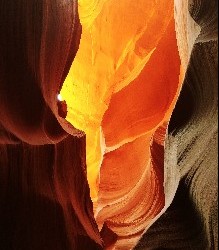
Most believe that the first inhabitants migrated across land connecting Ancient Asia with North America. These nomads are now referred to as “Paleo Indians”. Evidence suggests that the “Anasazi Indians” came next followed by the Hohokam during the period of 500 AD to 700 AD.
The name Anasazi was coined by the Navajos and means “The ancient ones who weren’t us”. For mysterious reasons, the Anasazi left the area. The Hohokam introduced irrigation farming which is evidenced by ancient canals that still exist today.
The Sinaqua Tribe which means “without water” in Spanish came to the Sedona area about 900-1000 AD. The Sinaquans are known to have been “dry farmers” (hence their name) and traded with other native groups some of which extended into South America. Many archaeologists believe that a gigantic volcanic eruption at about 1060 AD which formed the Sunset Crater forced the Sinaquans to flee the area. Others conclude that new war-like tribes attacked and forced them out for an extended period. Some evidence suggests that the volcanic ash created more fertile soils which enticed the return of the Sinaquans followed by the return of Anasazi remnants that taught the Sinaquans to build multi-storied dwellings into cliff-sides as defensive mechanisms. Some of these pueblo dwelling ruins still stand today at “ Montezuma Castle” and the “ Palatki Ruins
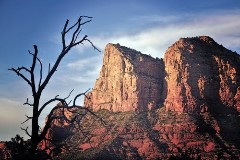
Quite suddenly around the 1300s, they seemed to have abandoned the area quickly. Some theorize that most were eliminated by other nearby inhabitants with other Sinaquans fleeing to subsequently meld with native inhabitants farther to the north.
Perhaps over an extended period of time, tribal segments branched off and integrated with other tribes and became the prehistoric ancestors of today’s various Indian Tribes in various parts of Arizona, Utah and New Mexico. Many researchers believe the Hopi Indians are descendants of the ancient Anasazi.
Who knows for sure what happened to the first “citizens of Sedona”, the Paleo, Anasazi, Hohokam and Sinaqua. Did they see the same Sedona we see today? Was it as beautiful then as it is today? That also we’ll never know. But we all are thankful for the treasures of artifacts they left us to enjoy and this spectacular place now called Sedona for the whole world to experience.
The quest for gold and silver riches brought Spanish explorers to the Sedona area in about 1583. It is believed that Antonio de Espejo was the first European to set foot in Sedona and what a sight it must have been. Antonio never discovered gold or silver but did discover the beauty that took nature millions of years to create. As did the first inhabitants, the Spanish left their contributions to history as well in the form of Colonial Architecture and descendents that have made a historical impact on all of Arizona.
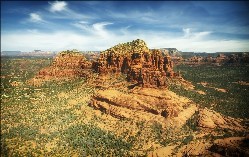
Near the beginning of the 1900s, there were few Caucasian squatters in the Sedona area. One was T.C. Schnebly and his wife. T.C. petitioned the U.S. Postal Service to make a postal stop in the area. The post office needed a name and he suggested several which were rejected by the Postmaster General as being too long. Schnebly’s brother suggested submitting the name of T.C.’s wife. Her name was “Sedona” and the rest is history.
Apples and peaches were Sedona’s first main industry. Frank L. Pendley homesteaded land alongside Oak Creek and harnessed the water to irrigate his orchards. Today the original homestead is owned by the State Park system as “ Slide Rock State Park”. Yes, apple trees still produce delicious fruit that is sold to the visiting public to help cover the cost of administering the park. Old historic structures still reside in the park as a continuous reminder of years past.
Sedona was discovered by Hollywood in the 1950s. Its startling beauty and unique backdrop attracted movie producers that used Sedona as the setting for over 70 films. The Sedona secret was out. Gradually, Sedona became the getaway home of some of the world’s rich and famous.
Today, tourism is Sedona’s primary industry attracting over 4 million visitors a year second only to the Grand Canyon as Arizona’s most visited destination.
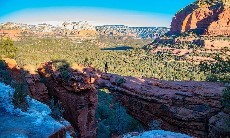
Dwell upon the ancient history of past civilizations. Imagine if they were here today to take one peek at what they discovered thousands of years ago. The coexistence of architecture that artfully blends with nature. The game of golf under the blue skies. The luxury resorts along the creek and mountainsides. The awe-inspiring attractions that entices the senses. And the joy of seeing their own ancient artifacts that confirms their prehistoric existence.
Thanks Paleo. Thanks Anasazi, Hohokam and Sinaqua. You served Sedona and the world well.
Photos on this article are from pexels and other net free sourcrs
this article is in the public domain
8 notes
·
View notes
Quote
Within the last few centuries Germany, Denmark, Switzerland, France, and other western European countries stabilized and then expanded their forested area by top-down measures, as did Japan [Tokugawa Shogunate, 1603-1867]. Similarly, about 600 years earlier, the largest and most tightly organized Native American society, the Inca Empire of the Central Andes with tens of millions of subjects under an absolute ruler, carried out massive reafforestation and terracing to halt soil erosion, increase crop yields, and secure its wood supplies. Examples of successful bottom-up management of small-scale farming, pastoral, hunting, or fishing economies also abound. One example [...] comes from the U.S. Southwest, where Native American societies far smaller than the Inca Empire attempted many different solutions to the problem of developing a long-lasting economy in a difficult environment. The Anasazi, Hohokam, and Mimbres solutions eventually came to an end, but the somewhat different Pueblo solution has now been operating in the same region for over a thousand years. While the Greenland Norse disappeared, the Greenland Inuit maintained a self-sufficient hunter-gatherer economy for at least 500 years, from their arrival by A.D. 1200 until the disruptions caused by Danish colonization beginning in A.D. 1721. After the extinction of Australia’s Pleistocene megafauna around 46,000 years ago, Aboriginal Australians maintained hunter-gatherer economies until European settlement in A.D. 1788. Among the numerous, self-sustaining, small-scale rural societies in modern times, especially well-studied ones include communities in Spain and in the Philippines maintaining irrigation systems, and Swiss alpine villages operating mixed farming and pastoral economies, in both cases for many centuries and with detailed local agreements about managing communal resources. Each of these cases of bottom-up management that I have just mentioned involves a small society holding exclusive rights to all economic activities on its lands.
Jared Diamond, Collapse: How societies choose to fail or succeed, Viking Press, New York City, N.Y., 2005.
#Jared Diamond#Collapse: How societies choose to fail or succeed#Diamond#science#environment#collapse#Why Societies collapse#European countries#France#Switzerland#Germany#Denmark#Native American societies#2005#Inca Empire#Central Andes#Andes#latin america#U.S. Southwest#USA#Mimbres#Anasazi#Hohokam#Puebloans#Pueblo peoples#Greenland#Greenland Inuit#Inuit#Danish colonization#history
2 notes
·
View notes
Text
History Of Phoenix
Phoenix is a city located in Arizona, United States of America. As a matter of fact, there are lots of things that make Phoenix distinct from other cities. It is the capital of Arizona, United States of America and also the most populous city in the state of Arizona. If you’re looking for a beautiful city in Arizona, then you can’t look away the city of Phoenix.

For approximately two millennial (2000 years), the region regarded as Phoenix today housed the Hohokam people. During their stay in Phoenix, the Hohokam people executed a lot of significant projects. Among these projects is the construction of 135 miles irrigation canals which play a key role in aiding the arability of Phoenix being a desert land. The Paths of these canals also became useful for the Arizona Canal, Central Arizona Project Canal and the Hayden-Rhodes Aqueduct. This is not all the developmental changes the Hohokam Civilization brought into Phoenix, they also engaged in extensive trade with their neighbor known as Anasazi, Mogollon as well as Sinagua and also with Mesoamerican civilization. Phoenix today is a city regarded as a ready market for business considering its thriving economy which is good for business.

Business men and women from across the US state of Arizona often visit the city of Phoenix, not to have fun, but to take advantage of the city’s thriving economy which is suitable for business growth. Pilates in Phoenix AZ are here. It features lots of modern gym facilities. This has been made possible by the role played by Phoenix Business Association which is an association that brings together various business owners in the city of Phoenix, hence, giving them the golden opportunity to share ideas on how to move their respective business forward. TriCore Fitness is an active member of this association.
Get Map Direction:- https://goo.gl/maps/ud8u2SmsNpr
1 note
·
View note